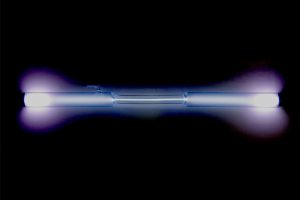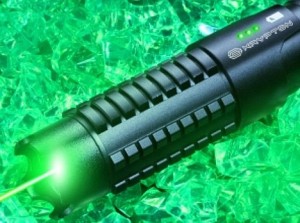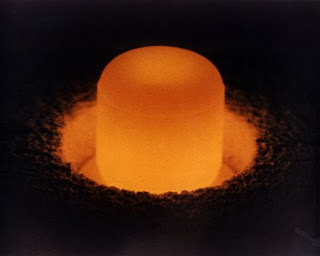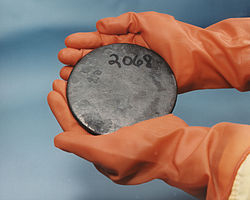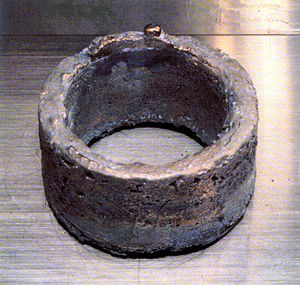Xenon-133
Xenon-133 is a radioactive isotope of Xenon. It is mainly used for imaging the lungs and also for assessing pulmonary function. This radioactive gas was dispersed into nature during the Fukushima Daiichi nuclear disaster in 2011.
Xenon-133 Identification
CAS Number: 14932-42-4
ChemSpider: 59751
PubChem: 66376
Xenon-133 Source
It is a fission product of Uranium-235 which means this radioactive gas can be produced by the fission reaction of Uranium-235.
Xenon-133 Symbol
The symbol for this radioactive isotope is 133Xe. It can also be denoted by Xe-133.
Xenon-133 Properties
Here are some of the basic properties of this radioactive substance:
Appearance: It is a colorless gas.
Odor: This gas does not have any distinctive odor.
Isotope Mass: The isotope mass of this radioactive isotope is 132.9059107 u (unified atomic mass unit)
Decay Energy: It has a decay energy of 0.427 MeV.
Boiling Point: Its boiling point is -108 °C at 1mm.
Xenon-133 Radioactive Decay
The unstable nucleus of this radioactive gas emits ionizing particles in order to lose energy and reach a stable state. It undergoes Beta decay by radiating Beta Rays (β) with 0.427 MeV decay energy. This radioisotope also emits small amounts of Gamma (γ) rays.
Xenon-133 Decay Equation
Following is the decay equation for the Beta (β) decay of this radioactive isotope:
13354Xe → 0-1β + 13355Cs
Xenon-133 Decay Chain
Xenon-133 decays into Cesium-133 which makes it the daughter nuclide of Xe-133. The decay chain of this radioactive isotope is very short as the next element produced in this decay chain is a stable substance. Here is the decay chain:
Xenon-133 → Cesium-133 (stable)
Xenon-133 Nucleus
There are 79 neutrons and 54 protons in the nucleus of a single isotope of this gas.
Xenon-133 Half Life
This Radioactive gas takes 5.243 days to decay and reduce to the half of its original amount.
Xenon-133 in Human Body
This gas neither occurs naturally in human body nor is it used by the body. This diffusible gas passes through the cell membranes while exchanging between tissue and blood. It has a better solubility in body fats than in blood or plasma. It is also a little soluble in aqueous media. The inhaled Xe-133 crosses the alveolar wall entering the venous circulation via the pulmonary capillary bed. Almost all the Xenon-133 gas will be exhaled after returning to the lungs. The whole process takes a short period of time as this radioactive gas has a biological half life of 5 minutes.
Xenon-133 Uses
The Gamma radiation from this isotope is used by means of inhalation in Single Photon Emission Computed Tomography (SPECT) to image the lungs, heart and brain. It is also used for the measurement of blood flow.
Precautions of Using Xenon-133
It is not advisable to administer this radiopharmaceutical preparation to pregnant women as adequate researches have not yet been done to determine its effects on fertility. It should not be used by people having hypersensitivity to this radioactive agent. Radiopharmaceuticals should be used under proper guidance of physicians who are qualified for safe use of radionuclides.
Xenon-133 Brand Name
Xeneisol is one of the most important brand names for this gas.
Xenon-133 is one of the most useful radioactive isotopes of Xenon. It is highly useful in the field of radiopharmaceuticals with a short half life of little over 5 days.
